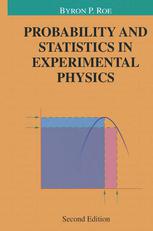

Most ebook files are in PDF format, so you can easily read them using various software such as Foxit Reader or directly on the Google Chrome browser.
Some ebook files are released by publishers in other formats such as .awz, .mobi, .epub, .fb2, etc. You may need to install specific software to read these formats on mobile/PC, such as Calibre.
Please read the tutorial at this link: https://ebookbell.com/faq
We offer FREE conversion to the popular formats you request; however, this may take some time. Therefore, right after payment, please email us, and we will try to provide the service as quickly as possible.
For some exceptional file formats or broken links (if any), please refrain from opening any disputes. Instead, email us first, and we will try to assist within a maximum of 6 hours.
EbookBell Team

4.4
62 reviewsIntended for advanced undergraduates and graduate students, this book is a practical guide to the use of probability and statistics in experimental physics. The emphasis is on applications and understanding, on theorems and techniques actually used in research. The text is not a comprehensive text in probability and statistics; proofs are sometimes omitted if they do not contribute to intuition in understanding the theorem. The problems, some with worked solutions, introduce the student to the use of computers; occasional reference is made to routines available in the CERN library, but other systems, such as Maple, can also be used. Topics covered include: basic concepts; definitions; some simple results independent of specific distributions; discrete distributions; the normal and other continuous distributions; generating and characteristic functions; the Monte Carlo method and computer simulations; multi-dimensional distributions; the central limit theorem; inverse probability and confidence belts; estimation methods; curve fitting and likelihood ratios; interpolating functions; fitting data with constraints; robust estimation methods. This second edition introduces a new method for dealing with small samples, such as may arise in search experiments, when the data are of low probability. It also includes a new chapter on queuing problems (including a simple, but useful buffer length example). In addition new sections discuss over- and under-coverage using confidence belts, the extended maximum-likelihood method, the use of confidence belts for discrete distributions, estimation of correlation coefficients, and the effective variance method for fitting y = f(x) when both x and y have measurement errors.